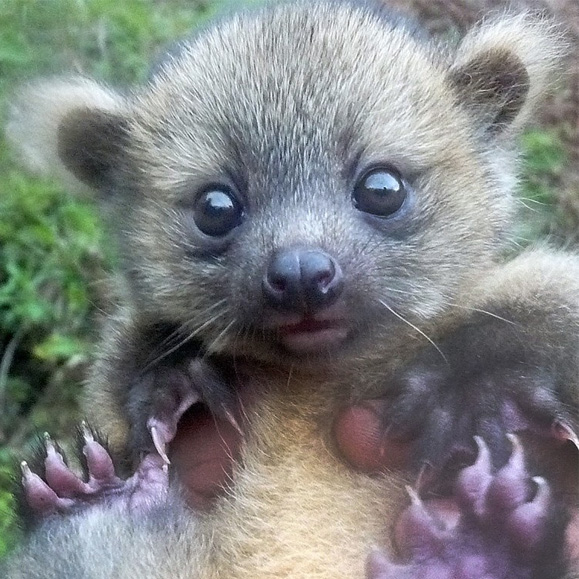After the recent discovery of Olinguito-the world’s newest mammal, scientists released first pictures of a baby Olinguito from La Mesenia Conservation Project in Colombia.
Olinguitos are found only in Ecuador and Colombia. For decades, biologists and local people misidentified olinguitos as olingos, a similar lowland species related to raccoons, coatis and kinkajous.
“Olinguito is the smallest of olingos with a distinct body shape, longer and softer fur,” said Kristofer Helgen, the lead scientist on the team and Director of Mammals at the Smithsonian Institute. “They are more colourful with a shorter, bushier tail, smaller ears and a more rounded face when compared to olingos.”
Although they are in the raccoon family and classified as carnivores, olinguitos feed on fruits and mostly active at nights.
Olinguitos give birth to one youngster at a time. The first photos of a baby olinguito are from La Mesenia Conservation project area in Colombia which is one of the most biodiverse regions in the world.

SavingSpecies, is an active NGO, purchasing and reforesting land to reconnect lost forest corridors in this area which is also home to eleven rare bird species and various orchids.
“This is exactly the kind of species that our projects help protect—scarce, wide ranging predators are hit hardest when forests become fragmented,” commented Stuart Pimm, the head of SavingSpecies and an ecologist at Duke University. “By reconnecting a large piece of forest that was almost pinched off, we knew we could make a huge difference.”
Want to learn more? Read the full story: Adorable baby olinguito photographed in Colombia (picture)